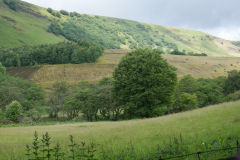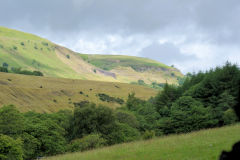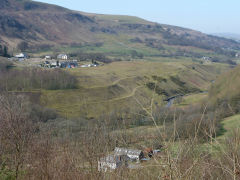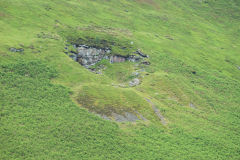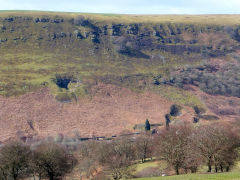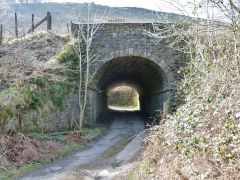The Industrial Archaeology and History of the Sirhowy Valley
Or click on the button to go to :-
Click on the thumbnail to enlarge a photo or map and sometimes read more about it.
Then click 'Full Size' on the toolbar to see it in all its glory.
Hollybush
Hollybush Old Colliery - SO 1655 0295
Hollybush 'Old' Colliery was sunk in the early 1870s and appears to have closed prior to 1900. Little remains but there are some small tips, stonework and the site of the shaft under the brambles.
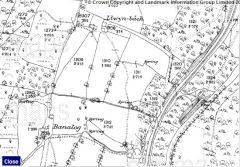
Hollybush Old Colliery, 1878
|
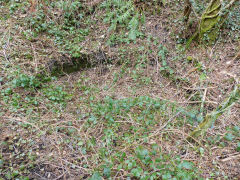
Hollybush Old Colliery shaft
|
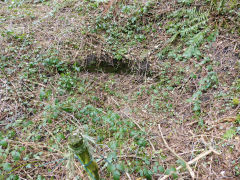
Hollybush Old Colliery shaft
|
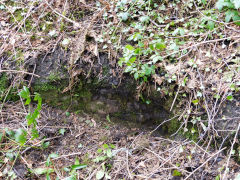
Hollybush Old Colliery shaft
|

Hollybush Old Colliery stonework
|
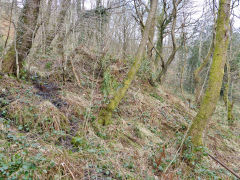
Hollybush Old Colliery tips
|
|
|
Hollybush Station area - SO 1660 0335
The Station House (SO 1657 0334) is now a private house, offers over £150k and it's yours. The subway (SO 1659 0349) is partially filled in and once provided access to the footpath down to New Hollybush Colliery. If you didn't fancy the subway then there are steps a little further up the line. To the South of the station some brick and stone foundations exist at SO 1657 0334.
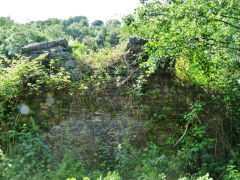
LNWR water tower, Hollybush
|
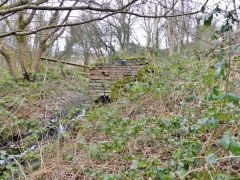
LNWR stonework at station
|

LNWR station house, Hollybush
|
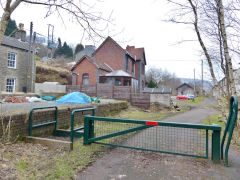
LNWR station house, Hollybush
|
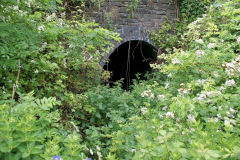
Subway to Hollybush Colliery
|
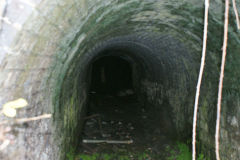
Subway to Hollybush Colliery
|
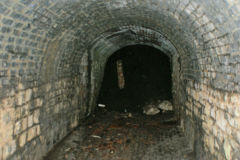
Subway to Hollybush Colliery
|
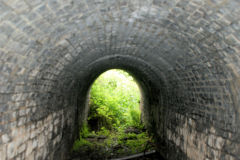
Subway to Hollybush Colliery
|
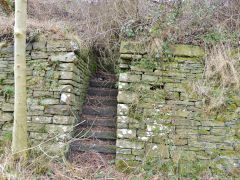
LNWR steps to Hollybush Colliery
|
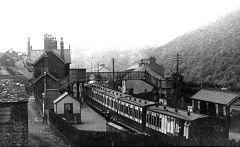
Hollybush Station & Colliery
|
|
|
Hollybush Colliery and Coke Ovens - SO 1654 0362
The Northern bank of coke ovens is derelict in the undergrowth at SO 1650 0375. The Southern bank, SO 1654 0362, is better kept, being used for animal feed and shelter. Closer to the village at SO 1655 0353 are some stone and concrete foundations. The LNWR runs below the coke ovens under a long and substantial stone retaining wall.
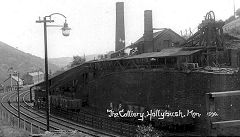
Hollybush Colliery
|
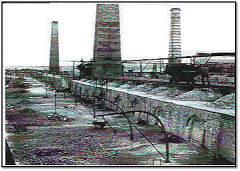
Hollybush coke ovens
|
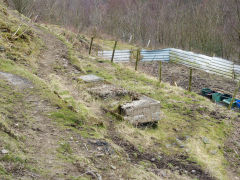
Hollybush Colliery foundations
|
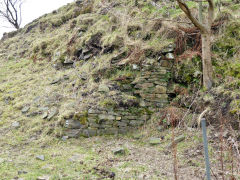
Hollybush Colliery foundations
|
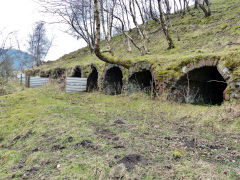
The southern coke ovens
|
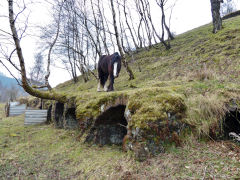
The southern coke ovens
|
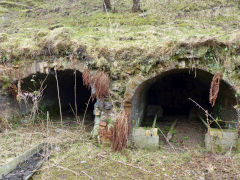
The southern coke ovens
|
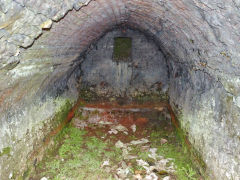
The southern coke ovens
|
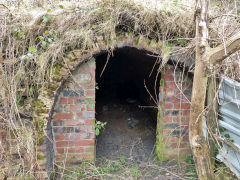
The southern coke ovens
|
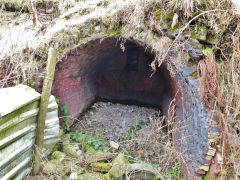
The southern coke ovens
|
|
|
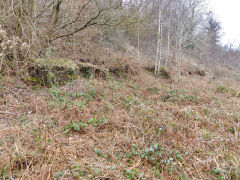
The Northern coke ovens
|

The Northern coke ovens
|
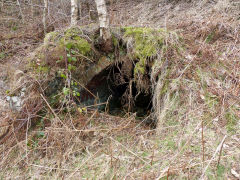
The Northern coke ovens
|
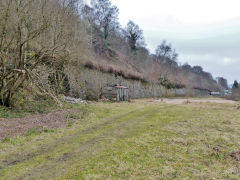
LNWR coke ovens retaining wall
|
New Hollybush Colliery - SO 1663 0368
The sites of the lower levels and odd stonework can be found beside the river over the footbridge. The tramway from the levels up to the gated ventilation level (SO 1667 0401) runs parallel and to the left of the forestry track. Just past the level, the fenced airshaft is up the bank to the right.

New Hollybush Colliery South level
|
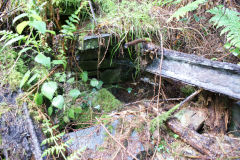
New Hollybush Colliery South level
|
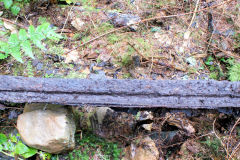
New Hollybush Colliery South level
|
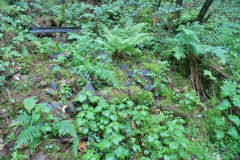
New Hollybush Colliery South level
|

New Hollybush Colliery South level
|
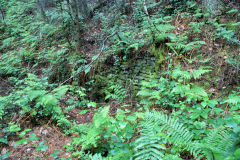
New Hollybush Colliery South level
|
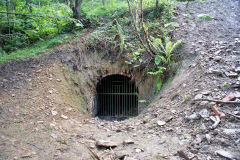
New Hollybush Colliery vent level
|
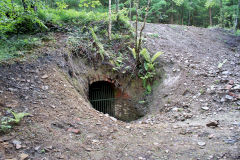
New Hollybush Colliery vent level
|
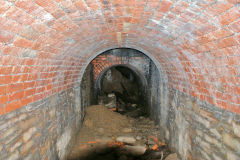
New Hollybush Colliery vent level
|

New Hollybush Colliery vent level
|
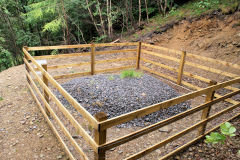
New Hollybush Colliery airshaft
|
|
Troedrhiwgwair
Troedrhiwgwair woods - SO 1596 0630
The first three levels in the woods opened before 1879 and probably even closed by then, certainly very little activity since, leaving the tips and level sites. They can be found at SO 1597 0607 (SW), SO 1616 0617 (SE) and SO 1607 0639 (NE). The fourth level at SO 1596 0630 (NW) is the well-known and well-preserved gated level and tips in the woods which was probably the alternative exit from Troedrhiwgwair Colliery. Another level was below the school at SO 1599 0660, open in the 1920s and '30s. The sites of the levels remain but close your eyes and imagine....
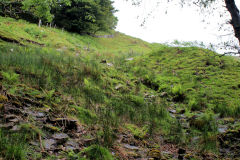
SE level tip, Troedrhiwgwair
|
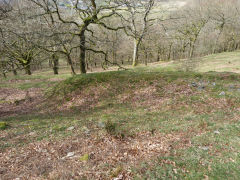
NE level tip, Troedrhiwgwair
|
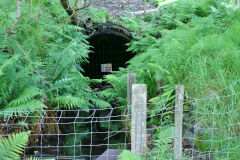
NW level, Troedrhiwgwair
|

NW level, Troedrhiwgwair
|
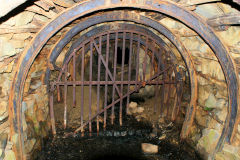
NW level, Troedrhiwgwair
|
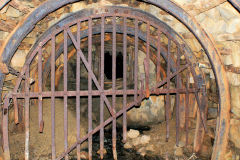
NW level, Troedrhiwgwair
|
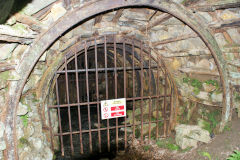
NW level, Troedrhiwgwair
|
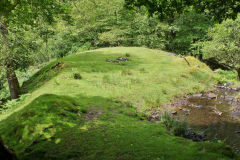
NW level tips, Troedrhiwgwair
|
Troedrhiwgwair Colliery - SO 1570 0703
This Tredegar Iron and Coal Co colliery was opened in 1900, closing in 1929 and abandoned in 1930, Situated in one of the old quarries above the village, it was connectedby a shallow incline to an exchange bank at Peacehaven (SO 1548 0730), the end of a long siding from Tredegar Gas Works and the LNWR. The course of the tramway, exchange bank, top of the level and some brickwork from the haulage engine are reminders of its existence.
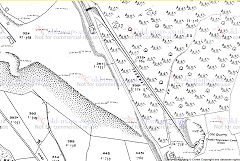
Troedrhiwgwair Colliery, 1920
|
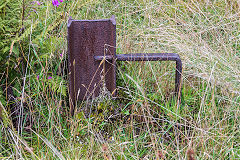
Troedrhiwgwair Colliery
|
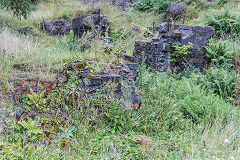
Troedrhiwgwair Colliery
|
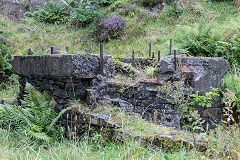
Troedrhiwgwair Colliery
|
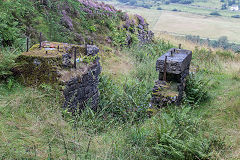
Troedrhiwgwair Colliery
|
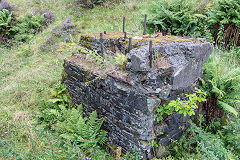
Troedrhiwgwair Colliery
|
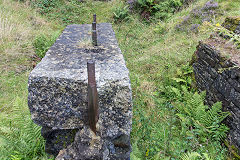
Troedrhiwgwair Colliery
|
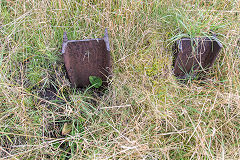
Troedrhiwgwair Colliery
|
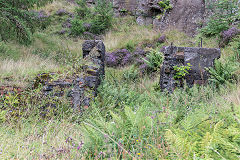
Troedrhiwgwair Colliery
|

Troedrhiwgwair Colliery
|
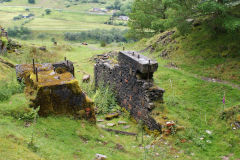
Troedrhiwgwair Colliery
|
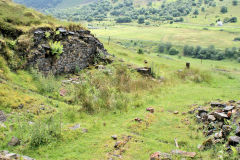
Troedrhiwgwair Colliery
|
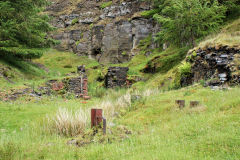
Troedrhiwgwair Colliery
|
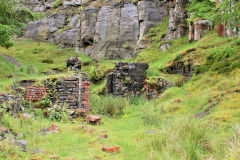
Troedrhiwgwair Colliery
|

Troedrhiwgwair Colliery
|
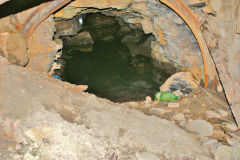
Troedrhiwgwair Colliery
|
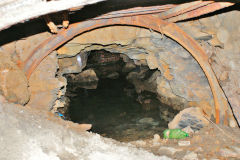
Troedrhiwgwair Colliery
|
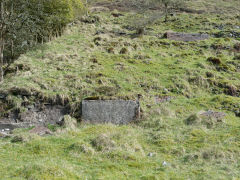
Foundations below Colliery
|
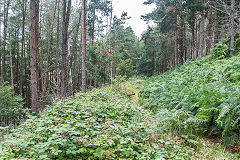
Troedrhiwgwair Colliery tramway
|
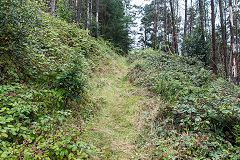
Troedrhiwgwair Colliery tramway
|
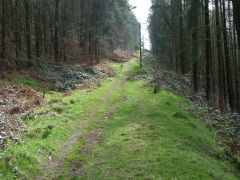
Tramway to Colliery tipping dock
|

The colliery loading bank
|
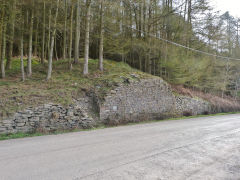
Colliery tipping dock
|
|
Troedrhiwgwair Village
A small level (SO 1593 0659) was behind the school, open in the 1920s and '30s. Just the site of the level remains but close your eyes and imagine.... The Fountain Inn at SO 1584 0655 is disused and rapidly becoming derelict, pity you can't get a pint there now, it's hot work wandering around here.
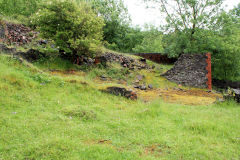
Troedrhiwgwair School
|
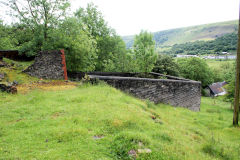
Troedrhiwgwair School
|
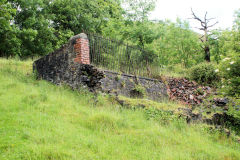
Troedrhiwgwair School
|

Fountain Inn, Troedrhiwgwair
|
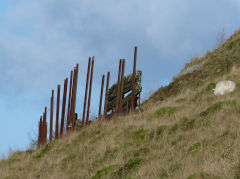
Troedrhiwgwair buttress
|
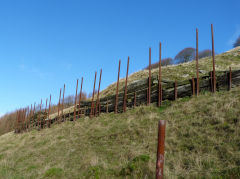
Troedrhiwgwair buttress
|
|
|
Tredegar
The railway to the Gasworks, the Ironworks tips and Troedrhiwgwair Colliery
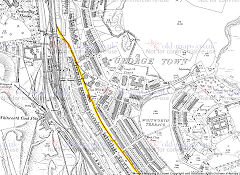
Tredegar gasworks, 1901
|
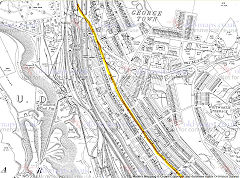
Tredegar gasworks, 1920
|
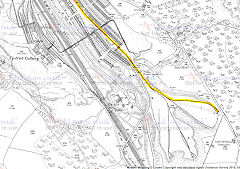
Tredegar ironworks tips, 1901
|
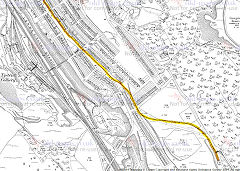
Tredegar ironworks tips, 1920
|
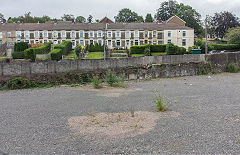
Tredegar gasworks
|
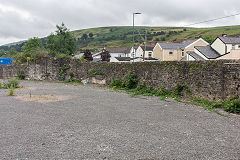
Tredegar gasworks
|
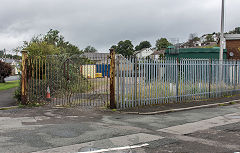
Tredegar gasworks
|

Tredegar gasworks
|
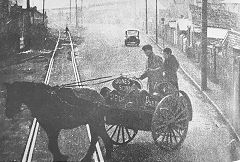
Vale Terrace in the 1930s
|
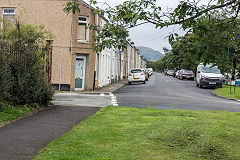
Vale Terrace in 2019
|
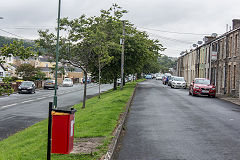
Troedrhiwgwair Colliery branchline
|
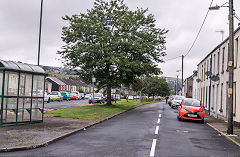
Troedrhiwgwair Colliery branchline
|

Troedrhiwgwair Colliery branchline
|
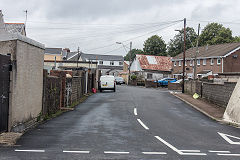
Troedrhiwgwair Colliery branchline
|

Troedrhiwgwair Colliery branchline
|
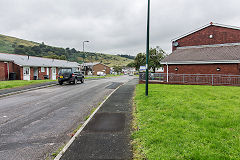
Troedrhiwgwair Colliery branchline
|
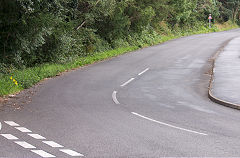
Troedrhiwgwair Colliery branchline
|
|
|
|
Mountain Pit, Tredegar - SO 1364 0898
Mountain Pit or Tredegar No 7 pit was open from c1840 to 1894 and claimed to have been the deepest balance pit in the world at 638 ft. The shaft was used as a pumping shaft after coal-winding ceased. Between 1948 and the 1960s, the site was a greyhound race track known as the 'Jesmond Dene Stadium'. The site is now scrapyard for cars and vans. The tramway ran down an incline to the Tredegar Tramroad from Trefil.
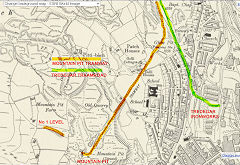
Mountain Pit and tramway, 1899
|
|
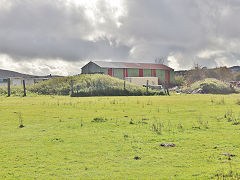
The site of Mountain Pit
|
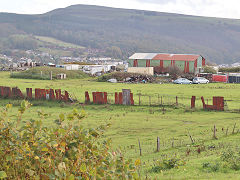
The site of Mountain Pit
|
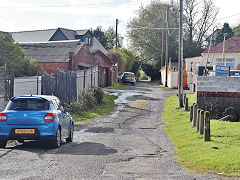
Mountain Pit incline and tramway
|
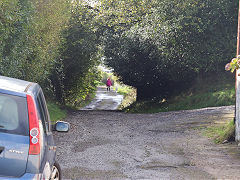
Mountain Pit incline and tramway
|
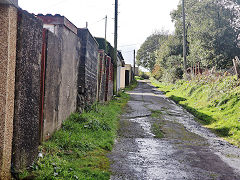
Mountain Pit incline and tramway
|
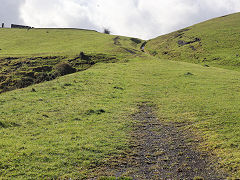
Mountain Pit incline and tramway
|
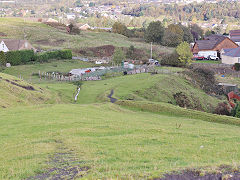
Mountain Pit incline and tramway
|
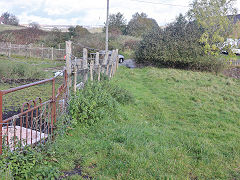
Mountain Pit incline and tramway
|
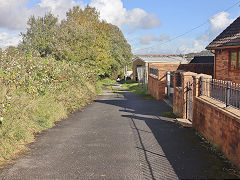
Mountain Pit incline and tramway
|
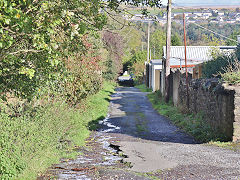
Mountain Pit incline and tramway
|
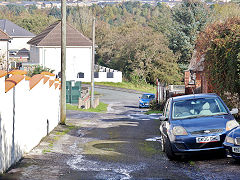
Mountain Pit incline and tramway
|
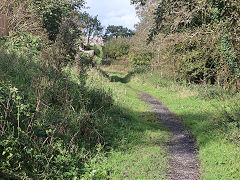
Mountain Pit exchange sidings
|
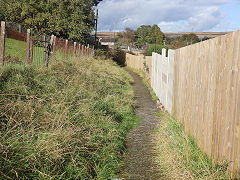
Mountain Pit exchange sidings
|
|
No 1 Level and John Davies Level, Tredegar - SO 1344 0900
According to the Coal Authority maps, this is No 1 Level, Tredegar with the site of John Davies Level sitting below the tips.

Tredegar No 1 level, 1899
|
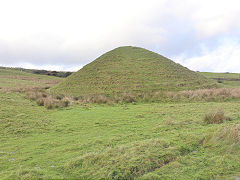
Tredegar No 1 level
|
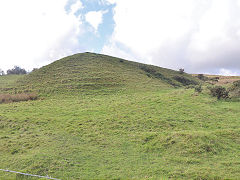
Tredegar No 1 level
|
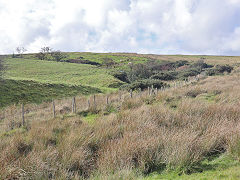
Tredegar No 1 level
|
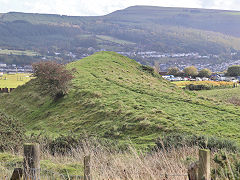
Tredegar No 1 level
|
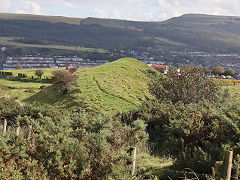
Tredegar No 1 level
|
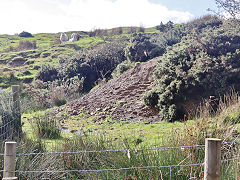
Tredegar No 1 level
|
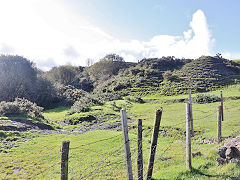
'John Davies Level'
|
Bryn Bach Pit or No 1 Pit, Tredegar - SO 1345 0980
Bryn Bach Pit, Tredegar, was one of Tredegar Iron Co's balance pits from c1869 to 1879, originally sunk in 1818 as 'Edward James Pit'. It was connected to the Tredegar Tramroad from Trefil by a tramway or tramroad that double-backed on itself. The course of the tramway is now the main link to Bryn Bach Country Park from Tredegar town.
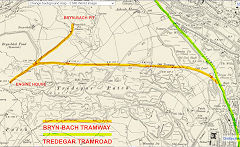
Brynbach Pit tramway
|
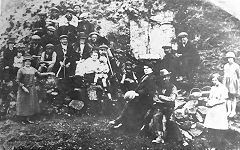
Brynbach Patches in 1926
|
|
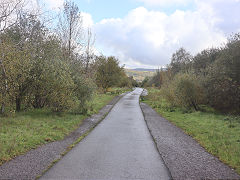
Brynbach Pit tramway
|
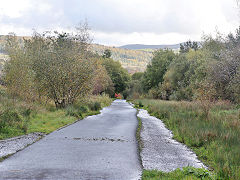
Brynbach Pit tramway
|

Brynbach Pit tramway
|
The Tredegar Tramroad to Trefil quarries
The Tredegar Tramroad to Trefil quarries as it passes through Tredegar town.
For more info and photos, go to the 'Tramroads and Railways to Trefil Quarries' page, click here :-
The Tredegar Tramroad

Brynbach Pit tramway
|
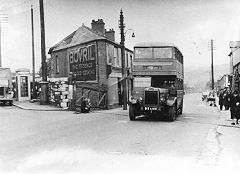
The Yard gates at Church Street
|
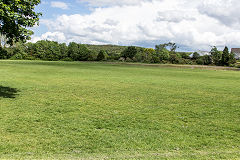
The site of Briggs Pit
|
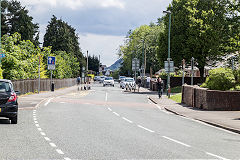
Tredegar Tramroad in Stockton Way
|
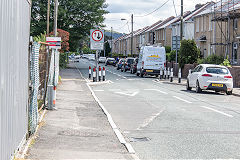
Tredegar Tramroad in Stockton Way
|
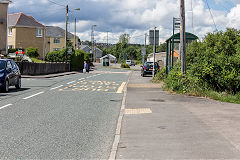
Tredegar Tramroad in Sycamore Avenue
|
Around Tredegar Town
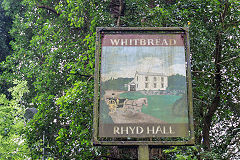
'Rhyd Hall' pub sign
|

Ty Trist Colliery 1899 tips tramway
|
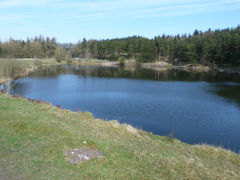
St James reservoir, Peacehaven
|
|
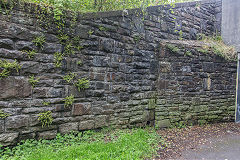
Bridge Street abutments
|
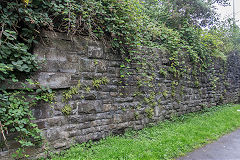
Bridge Street abutments
|
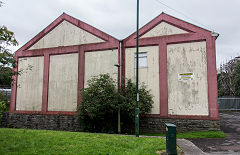
Tredegar Ironworks 1902 stores
|

Tredegar Ironworks 1902 stores
|

Mount Pleasant brickworks
|

Mount Pleasant, Tredegar
|
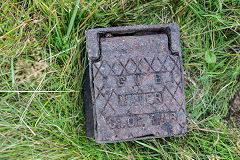
'GWB Water Stop Tap'
|
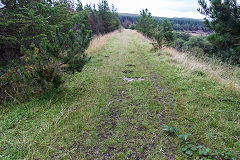
Scotch Peter's Reservoir
|
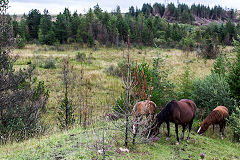
Scotch Peter's Reservoir
|
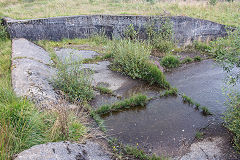
Scotch Peter's Reservoir
|

Scotch Peter's Reservoir
|

Scotch Peter's Reservoir
|
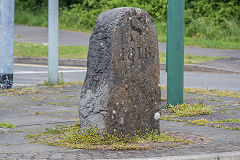
'S 1818' Ironworks boundary stone
|

Cast iron post in Tredegar
|
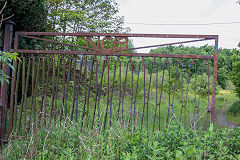
NCB Tredegar gates
|
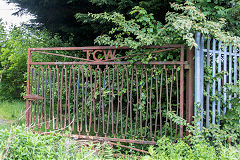
NCB Tredegar gates
|

NCB workshops site
|
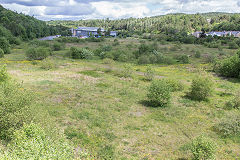
NCB workshops site
|
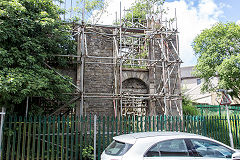
Tredegar Ironworks Shop Row
|
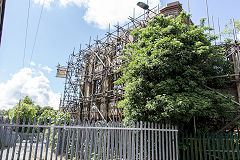
Tredegar Ironworks Shop Row
|
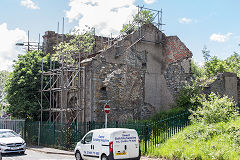
Tredegar Ironworks Shop Row
|
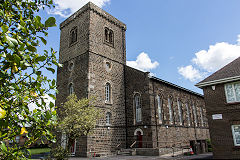
St Georges Church, Tredegar
|
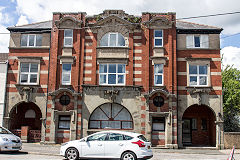
Ironworks Central Surgery
|
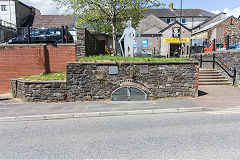
Yard Level, Tredegar
|
Tredegar Ironworks locomotives
Tredegar Ironworks built a number of locomotives for use in the ironworks and on the Sirhowy Tramroad. They were tramroad locomotives but a couple are believed to have been converted for use on standard gauge railways. The two narrow gauge locos were built for the Tredegar to Trefil Tramroad.
| Date Built |
Type |
Gauge |
Name |
| 1832 |
0-6-0 |
4' 2" to 4' 4" |
St David |
| 1832 to 1848 |
0-6-0 |
4' 2" to 4' 4" |
Tredegar |
| 1832 to 1848 |
0-6-0 |
4' 2" to 4' 4" |
Jane |
| 1832 to 1848 |
0-6-0 |
4' 2" to 4' 4" |
Lord Rodney |
| 1832 to 1848 |
0-6-0 |
4' 2" to 4' 4" |
Lady Sale |
| 1832 to 1848 |
0-6-0 |
4' 2" |
Prince Albert |
| 1832 to 1848 |
0-6-0 |
4' 2" to 4' 4" |
Fanny |
| 1832 to 1848 |
0-6-0 |
4' 2" to 4' 4" |
Laura |
| 1853 |
0-6-0 |
4' 2" to 4' 4" |
Bedwellty |
| 1854 |
0-6-0 |
4' 2" to 4' 4" |
Charlotte |
| - |
0-4-0 |
4' 2" to 4' 4" |
Dispatch |
| - |
- |
2' 10" to 3' 0" |
- |
| - |
- |
2' 10" to 3' 0" |
- |
Pont Gwaithyrhaearn
Pont Gwaithyrhaearn Furnace - SO 1649 0434
Pont-gwaith Level - SO 1635 0422
Pont Gwaithyrhaearn means 'The Bridge Iron Works' but there are scant remains of this pre-1700 charcoal iron furnace, lime kilns and foundry. The site was measured when derelict in 1831 and it was 3 metres (10 feet) across the base. It is believed to have fallen into dis-use circa 1760. It's worth bearing in mind that this is not the same as Pont-y-gwaith Ironworks, of the well-known drawing, which is in the Taff Vale near Abercynon. Pont-gwaith Level was operational from pre1843 to 1896 and little remains of that either.
'An Outline of the History of Pont Gwaith yr Haearn' by Eiddil Gwent (1798 - 1878) written in 1868
"Pont Gwaith yr Haearn is a kind of small and insignificant village on the banks of the River Sirhowy about three and a half miles below Tredegar. It got this name from the furnace that once smelted iron there many long years ago - and the name will probably stay for as long as the river Sirhowy washes the foot of Manmoel's cliffs and woe betide the man who would attempt to change this name which has adorned the old furnace so long, at the hands of Lady Hall, Llanover (Gwenynen Gwent), for her Ladyship is the owner of the place and her zeal and enthusiasm for keeping up the old Welsh names of places in Wales [is very great].
It was half a century ago, namely in the year 1818, that I first paid a visit to Pont Gwaith yr Haearn. At that time there was little cause for even the most meticulous of antiquarians to doubt for a minute in his mind the existence of the old furnace of Pontgwaithyrhaearn, for the black heaps of cinders that surrounded the place were sufficient proof of the existence and antiquity of this old furnace. And although the black heaps of cinders that surrounded it were covered over with grass, and the old furnace itself almost completely covered by nettles - like one ignored by the finger of tradition and disregarded by history - yet it still demands its rightful place as equal, if not older, in age than any of the ancient furnaces of Wales:- such as the Pont y Gwaith furnace, in the parish of Merthyr, Pontyrhun furnace, Cwmywernlas furnace, Melin y Cwrt and the old Caerphilly furnace.
During the fifty years that I have spent in this place, namely Tredegar, I have doubtless been some tens of times to Pontgwaithyrhaearn, every time quizzing the inhabitants in relation to relations to Pont Gwaith yr Haearn; but it would have been as well to ask the man in the moon as to ask them, for the answer was "We know nothing." But small wonder, for they were all incomers and the old natives of the place had all passed on - without leaving behind them as much as a single tradition, but for the place name, namely Pont Gwaith yr Haearn. About 37 years ago [1825], I measured the old furnace, and I found that it measured about 40 feet in circumference and its diameter was about 10 feet and 3 inches. But recently I paid a visit to the old furnace, and to my disappointment it was no more than 30 feet in circumference and 10ft in diameter. It is probable that this can be attributed to the decay of time during the 37 years that have passed - for it is now level with the ground, aye, some 3 feet or more lower now than when I first saw it.
But having thus loitered around the old furnace, I must now lead the reader to the facts which prove, undeniably, the existence of Pont Gwaith yr Haearn.
"A wado hyn aed a hi
A gwaded i'r haul godi."
“Whoever would deny this, let him go
And deny that the sun rises.”
About 37 years ago I went to a place called Llanhilleth [Llaniddel in the original] to ply my craft and who should I meet there but Mr. Rees Davies, the son of the Mr. Rees Davies who built the Tredegar furnaces, from No.1 to No.5. Mr Davies had been in France for some years keeping an ironworks. But after the start of the Revolution in France, he returned to Wales an eminently respectable gentleman of wealth - and he started up at the Llanhilleth foundry. One day, I met Mr Davies and he told me that he had, at last, extracted the history of Pont Gwaith yr Haearn to the last detail.
"From whom, Sir?" I answered. "From Mrs Thomas - an old lady who is bed-ridden through great age - who lives in the house next door to the foundry. This lady is the mam-gu [“grand-mother”] of Mr. John Thomas, formerly of Pontymeistr [now Pontymister] but now residing in France. And Mr Thomas told me, when I was in France, that it was his family who founded Pont Gwaith yr Haearn - and here are all his words shown to be true by his mam-gu - "Go in turn to Mrs Thomas, and she will surely give you the same details to you as I got - for her memory is quite good considering that she is 85 years of age." - A long life indeed, is it not, dear Reader?
This news caused me great restlessness in my mind - and restless I was until I worked my way around to holding some small conversation with this venerable old lady. Let the reader carefully peruse the conversation that took place between us, for I have nothing but what she told me as any foundation for the existence and antiquity of Pont Gwaith yr Haearn - and I hope that that is sufficient for any sane and sensible man when he considers out of whose mouth it came."
The Conversation
Having paid my respects to the old lady, I said to her -
"It's likely, Mrs. Thomas, that you remember the furnace at Pont Gwaith yr Haearn working."
"Yes I can, my boy - it was there that my father was working when I was born - and after that my husband's relations worked there."
"Where did they obtain coal, Mrs. Thomas?"
"It was not coal that they used at that time, but charcoal; the government was against burning coal at that time, because, they said, it poisoned the air."
"What did they have making blast for the fire at that time, Mrs. Thomas?"
"Oh, bellows."
"Did your family live in Pont Gwaith yr Haearn?"
"No, but they lodged there, going home every Saturday night to Twyn yr Odyn, Merthyr; and when Monday morning came they returned from there as the crow flies to Pont Gwaith yr Haearn."
"Do you know, Mrs. Thomas, where they obtained iron-ore to make iron?"
"Somewhere in the neighbourhood of Pont Gwaith yr Haearn they got it, but I don't know where."
"Were the masters Welshmen or Englishmen?"
"They said they were Welshmen, but they were Welshmen from France; two gentlemen without equal they were as well, they are very well remembered."
"It is a fact, Mrs. Thomas, that a nation of Welshmen has been settled in France for 1200 years, we call them Llydawiaid - Bretons."
"Well, there they are."
"Well, what became of these gentlemen?"
"Well, they returned to the soil of their native land, namely France, but despite that we received letters from them for several years, because my family - that is the Thomases of Twyn yr Odyn, Merthyr - were greatly respected by them - and it was their son that enticed John, my grandson, from Pont y Meistr to France to keep an ironworks - and that is where he is to this day."
"How old were you at that time?"
"Well, I could have been between ten or twelve years of age."
"How old are you now?"
"Well, I am now eighty five."
It is obvious that were this old lady alive today [1862] she would be 128 years old. Well, that is the substance of the conversation that passed between myself and the aged lady relating to Pont Gwaith yr Haearn, and had I not chronicled it at the time, doubtless the history of Pont Gwaith yr Haearn would have been completely lost, probably forever. It is only fair to inform the Reader at this point that, if called upon, the writer is able to refer him to grandchildren, great-grandchildren and descendants of this old lady and that without travelling more than ten miles.
The natural conclusion in the light of the above statements is that the Bretons came over to Wales to their fellow countrymen, during the time of the heated war between England, France and Spain during the reign of George II, and that, after the peace that was made in 1748 during the same reign (within two or three years) they returned to Brittany in France. And another natural conclusion is that they built the Pont Gwaith yr Haearn furnace about the year 1738 or 1739. In the time of King James, all the furnaces of this Kingdon stood at some 300 in number; and in the 40 years of the reign of George II they were reduced to 59, and Pont Gwaith yr Haearn was one of them.
'R hen ffwrnes gadarnwych ail huan oleuwych,
Amliwiaist yr entrych yn fynych gan fwg;
Er lles - trwy hanesion o lawr dy falurion,
Cawd dyfnion ddirgelion i'r golwg.
"O, sturdy old furnace, like the bright, excellent sun,
You have often coloured the heights of heaven with smoke;
For common good - by means of histories from the floor of your ruins,
Deep secrets have been brought to light."
Acknowledgments, sources and further reading.
Thanks for addition information to :- T Eric Davies, Mark Lloyd, Geoff Palfreyand Karl Plumley
A Guide to the Website
Industrial Wales
Collieries, Ironworks, Quarries, Railways, Canals, Tramroads, Tunnels, Culverts and so much more....
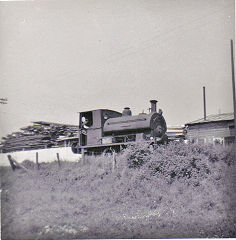
|
Brickworks of Wales
Bricks are 'History with a label' so here's the story of the Brickworks of Wales - photos, maps and the products themselves
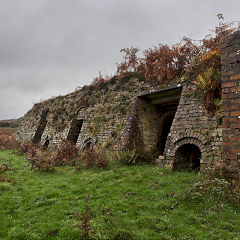
|
Around the World
My travels around the UK and the Whole Wide World in search of industries, railways, trams and mines to name a few.
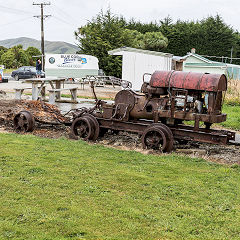
|
Boundary Stones and Mileposts
Boundary Stones, Mileposts and other markers in simple alphabetical order of their initials, name or site.

|
Ships and Shipping
Ships around the World in simple alphabetical order of their name (or apparent area if I can't read the name).

|
The Site Map and Index
A full list of all the pages of the whole website in just one place, so you should find exactly what you are looking for.

|
About the Site
The background and technical details about the site, plus a contact page and links to other sites - and a warning !!
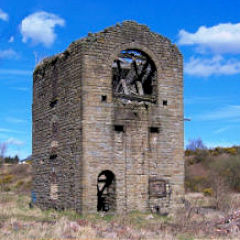
|
Contact Me
Something to add? A great photo? Something wrong? or need to know more about things? Just drop me a line here.

|
Further Reading
You can find lots of local and other very helpful websites, books, magazines and Facebook groups all listed here.
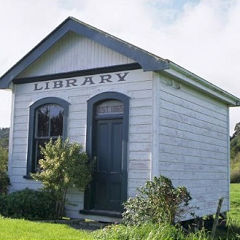
|
All rights reserved - Phil Jenkins








